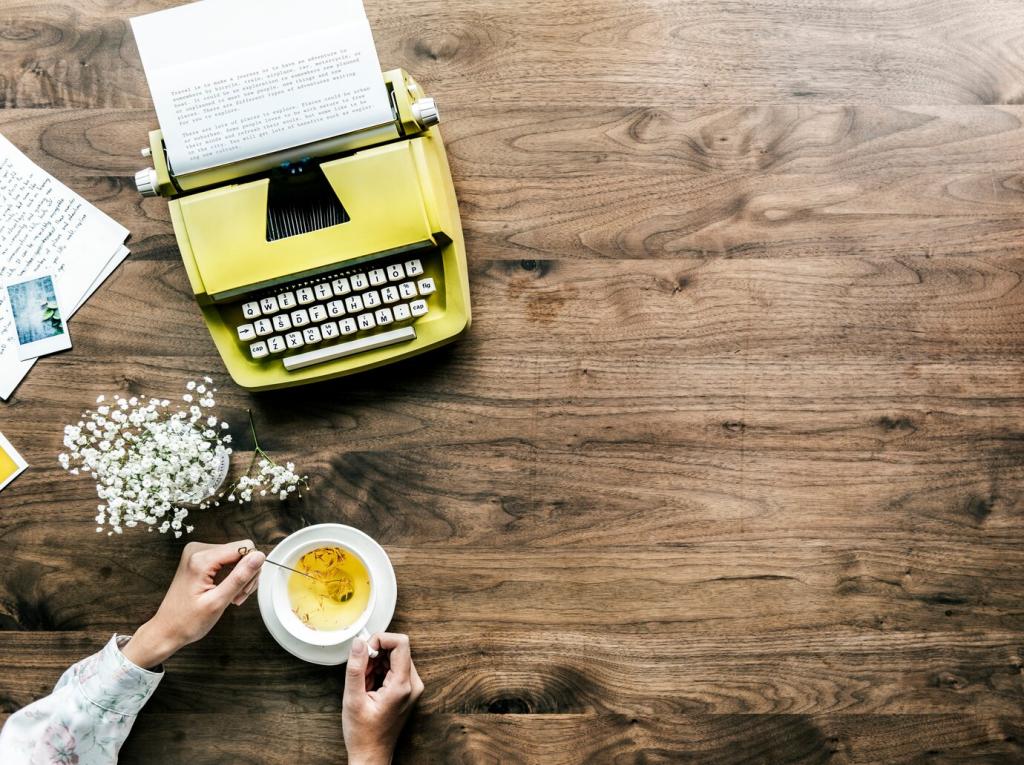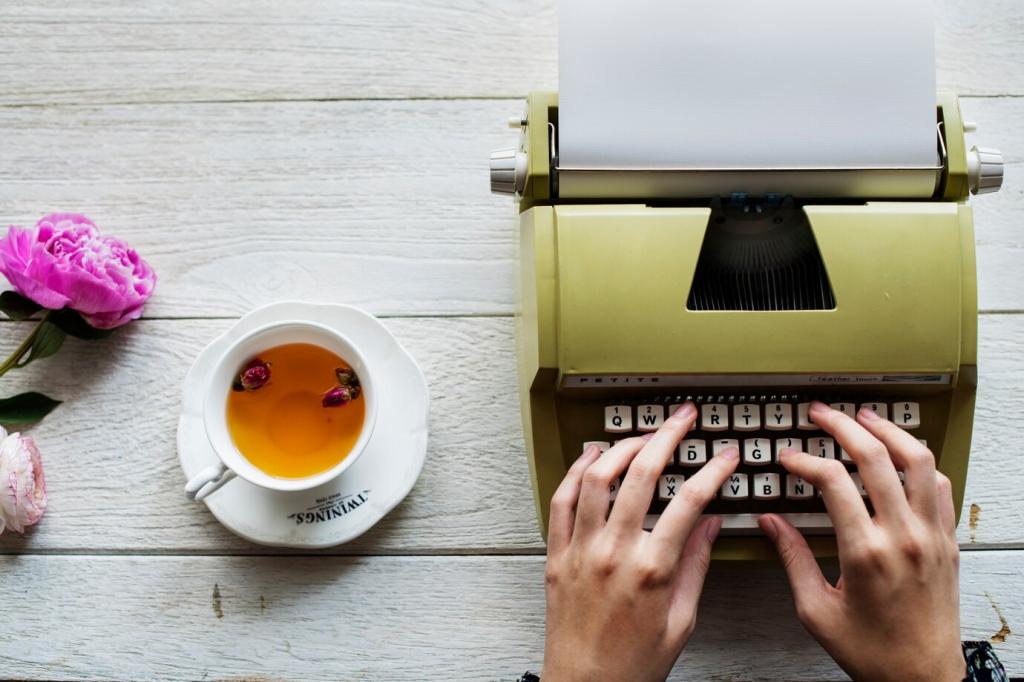Showcasing Unique Design Styles Through Copy
Voice as Visual: Translating Aesthetics into Tone
Minimalism thrives on restraint. Short sentences, fewer adjectives, and intentional pauses mirror generous whitespace. Replace flourish with clarity, letting verbs carry meaning. Readers breathe between words, exactly like they breathe between elements on a clean grid.
Voice as Visual: Translating Aesthetics into Tone
Brutalism invites friction and honesty. Write headlines that hit hard, avoid euphemisms, and celebrate rawness. Embrace monosyllables, declarative lines, and structural repetition that feels like concrete columns. Ask for action fearlessly, then let the design back your nerve.

Typographic Synergy: When Letters Speak the Layout
Sans-Serif Calm, Conversational Clarity
Neutral sans-serifs prefer conversational cadence and precise structure. Use active voice, concrete nouns, and supportive subheads. Keep jargon light. Imagine friendly signage at eye level guiding someone kindly, one clean sentence at a time.
Serif Heritage, Story-Laden Lines
Serifs carry lineage and literary memory. Write with narrative confidence, graceful transitions, and considered pacing. Allow longer sentences to unfurl like ligatures. Reference origins, craft, and care. Invite readers to linger as though turning linen pages.
Expressive Display, Delightful Disruption
Experimental display faces deserve surprising syntax. Break lines where rhythm begs. Use intentional fragments. Plant playful alliteration that echoes angular forms. Balance novelty with clarity, because delight lands harder when the meaning remains unmistakably easy to grasp.

Microcopy that Mirrors Micro-Interactions
Buttons that Move Like Verbs
If your button springs, your verb should spring too. Swap vague nouns for energetic actions. “Save” beats “Submit.” “Start” beats “Continue.” Match anticipation states with progressive verbs, and confirmations with past tense closure that feels satisfyingly complete.
Forms that Speak Human
Forms are conversation, not interrogation. Replace punitive errors with compassionate help. Offer examples where uncertainty lurks. Celebrate completion with specific encouragement. Respect effort with concise language, never cleverness. The best form copy disappears exactly when confidence appears.
Empty States that Encourage Return
Empty states are invitations, not failures. Suggest one clear next step, contextual to the design’s purpose. Include a short benefit-oriented line and a friendly micro-illustration’s tone in words. Make absence feel like potential, not punishment.
Design Systems, Consistent Stories
From Color Tokens to Word Choices
Color tokens hint at mood. Cool neutrals suggest analytical calm; warm accents suggest approachability. Mirror those cues with language: sober precision for complex tasks, friendly elaboration for onboarding. Let semantics inherit from the same source as swatches.

Field Notes: Real Projects, Real Alignments
01
Geometrics and Directness in a Retail Landing
A Bauhaus-inspired layout used strict grids and primary blocks. We paired it with geometric headlines, clipped prepositions, and numbered benefits. The result felt architectural and honest, helping shoppers scan decisively without sacrificing brand personality.
02
Gradients and Gentle Encouragement in a Wellness App
Soft gradients and rounded cards demanded compassionate language. We replaced imperative nudges with empathetic invitations and reflective questions. Engagement rose as users felt accompanied, not managed, and daily streaks grew through encouragement rather than pressure.
03
Precision and Plain English in a Technical Dashboard
A dark, data-dense dashboard leaned on engineering credibility. We kept sentences terse, terms defined inline, and alerts actionable. Cognitive load eased, support requests dipped, and teams reported faster onboarding because the interface finally spoke their operational reality.
Try This: Exercises to Showcase Style Through Copy
Pick any design style—minimalist, brutalist, playful—and rewrite the same message three ways. Constrain word counts to match density. Note which verbs, sentence lengths, and metaphors matched each layout’s energy and intention best.

